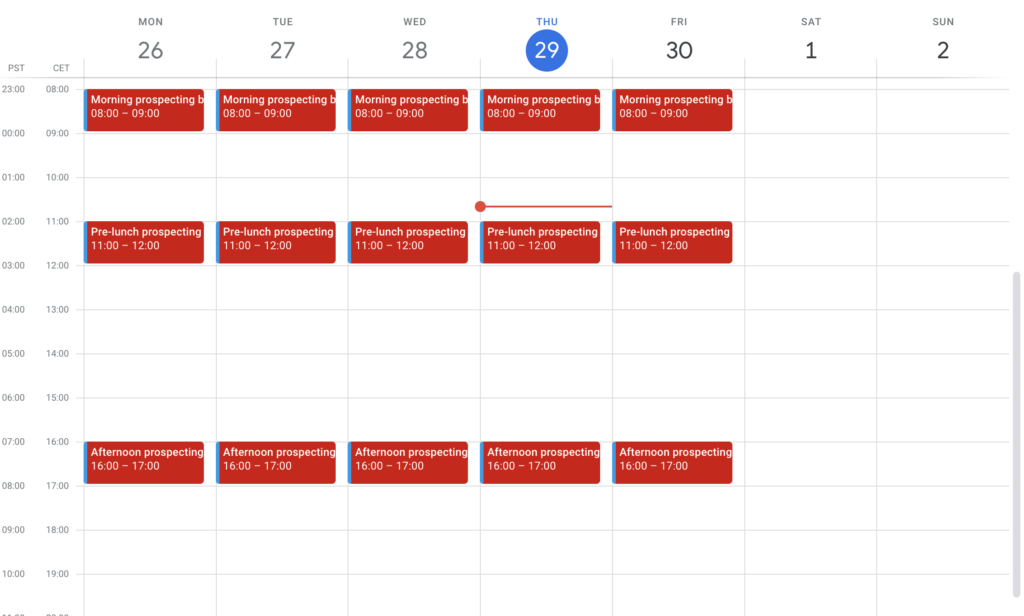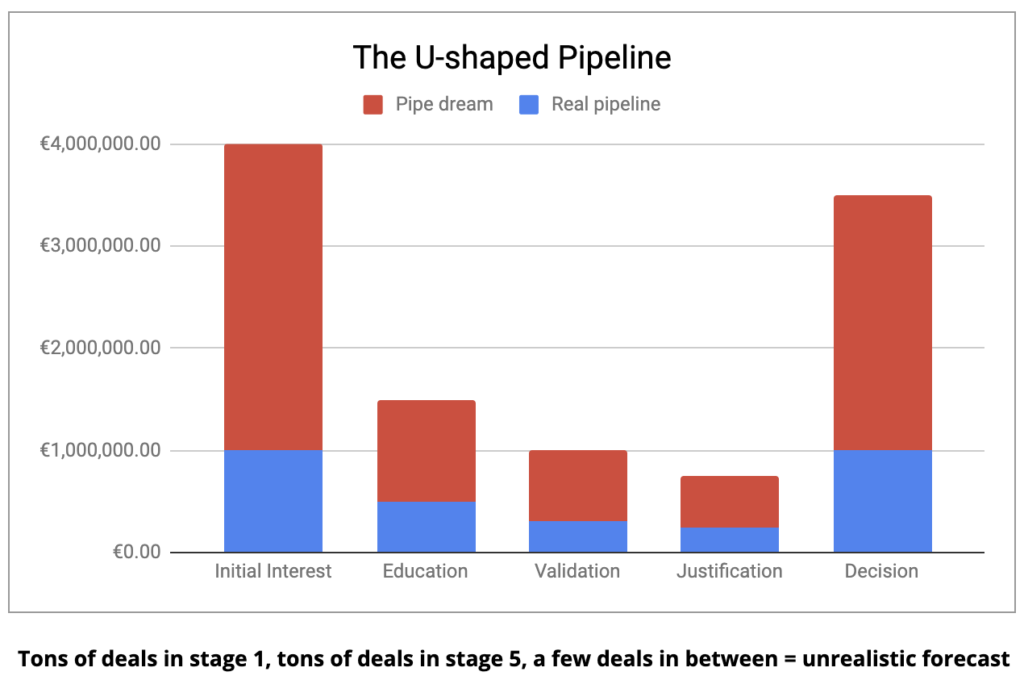3 common prospecting mistakes (and how to stop doing them)
In today’s issue, I’m going to share the 3 prospecting mistakes I see when training SDRs, and how to stop doing them.
These mistakes are often the results of poor prospecting habits, and the lack of a clear SDR playbook.
And in most cases, SDR leaders never had a real prospecting routine, so they don’t know how to build one for their teams.
Here are the top 3 mistakes I see when I meet SDRs:
Mistake #1: Not time blocking
Time blocking is the act of putting blockers in your calendar, in order to protect your schedule for key activities.
Most SDRs I meet do not time block because they feel like they have to be constantly available for prospects, colleagues, or managers. This creates a situation where they are constantly switching tasks, they cannot be focused for long enough, and they end up not doing enough of the tasks that will bring them success.
What to do instead?
I recommend every SDR I meet to put at least one daily blocker in their calendar, at the same time every day. If your job’s main focus is to create opportunities, have at least 3 hours of your time protected with blockers.
Below is an example of an efficient time-blocked schedule:

Mistake #2: Not having a prospecting routine
A prospecting routine is a key element for success as an SDR. It’s a daily habit that allows you to repeat healthy prospecting tasks. You could compare it with a daily workout session.
Most SDRs make the mistake of not building a routine, because they underestimate the unpredictability of the job in the long run.
They start with a ton of motivation, but it often changes based on the replies they get, their performance, or even the season. Without a system they end up with irregular input, which creates irregular outcomes
What to do instead?
Let’s be honest. Prospecting isn’t super fun. It’s a set of repetitive tasks, and doing enough of them plays a huge role in reaching your targets. So in order to prevent your variation of motivation from getting in your way, here’s what I recommend:
Find the time of the day when you’re the most productive (for me it’s early morning)
Put your time blocks at these times (as seen in step 1)
Start with your follow-ups (all prospects that are in active sequences with a follow-up due today)
Find enough prospects to add to your sequence (use this calculator to find out how many you need)
Add them to your sequence (send a connection request, call them, whatever is your first sequence step)
Mistake #3: Not tracking their prospecting activities
Finally, a cardinal sin of SDRs is their inability to create a simple tracking system. Without it, they end up missing follow-ups, some meetings fall through the cracks, and all their hard work leads to disappointing results.
Tracking your activity serves a few important purposes:
it shows your manager that you are actually putting in the work
it frees some brain power for tasks that need it the most
it prevents you from worrying about missing your follow-ups
But most SDRs I meet do not track their activities because they don’t have the right tool to do so.
What to do instead?
The answer will change depending on your setup.
In most cases, you’ll have a sequencer already available (think SalesLoft, Outreach, Groove, or Hubspot to name a few). If that’s the case, learn how to use the task list feature of your tool. You should be able to create rules to track your activity, and add a reminder to follow-up.
In some cases, you won’t have a sequencer, or you won’t be able to use it properly (looking at you, sales operations and enablement…). If that’s the case, just use a spreadsheet to track your activity, or go check my Notion Prospecting Tracker.
In conclusion
Being an SDR is more about building processes and routines than being creative or thinking outside of the box (even if it’s important). If you can’t focus on the basics, you won’t be able to deliver as expected, and you’ll end up hating your job, or getting fired.
On the other end, if you create a good system, you’ll quickly realize booking meetings and creating opportunities is a numbers game, and you’ll make more money, get promoted faster, and have more time to focus on what matters for you.
So keep in mind:
Protect your schedule with time blocks
Create a prospecting routine
Track your activity
I hope this helps!
- Build your outbound prospecting system from scratch here (200+ students)
- (NEW!) Write cold messages that get a 38% reply rate and 27% meeting rate here (20+)
- Book me 1:1 or for your team here
- (NEW!) Sponsor my newsletter & get 3k+ eyeballs on your ad!
Subscribe to the Newsletter
Get my free, 4 min weekly newsletter. Used by 5.900+ salespeople to book more meetings and work when, where, and how they want.
Subscribe to the Newsletter
Get my free, 4 min weekly newsletter. Used by 5.900+ salespeople to book more meetings and work when, where, and how they want.




